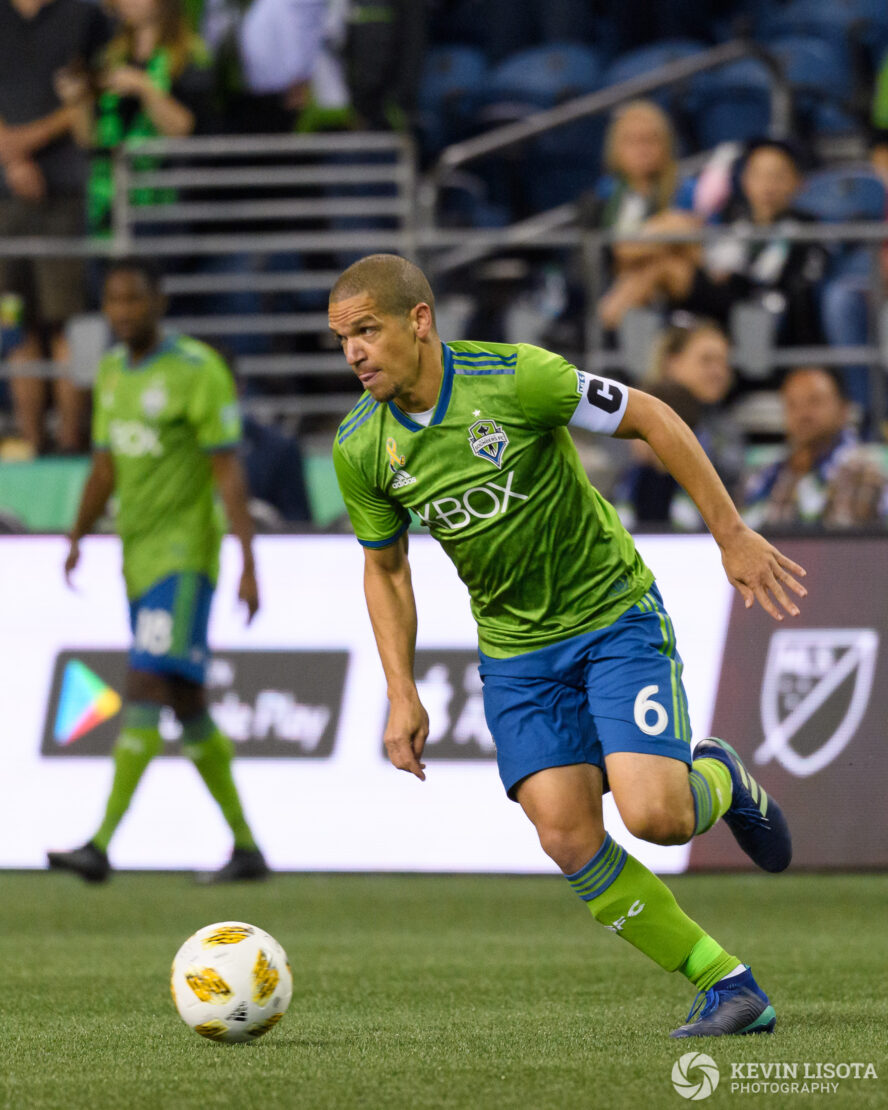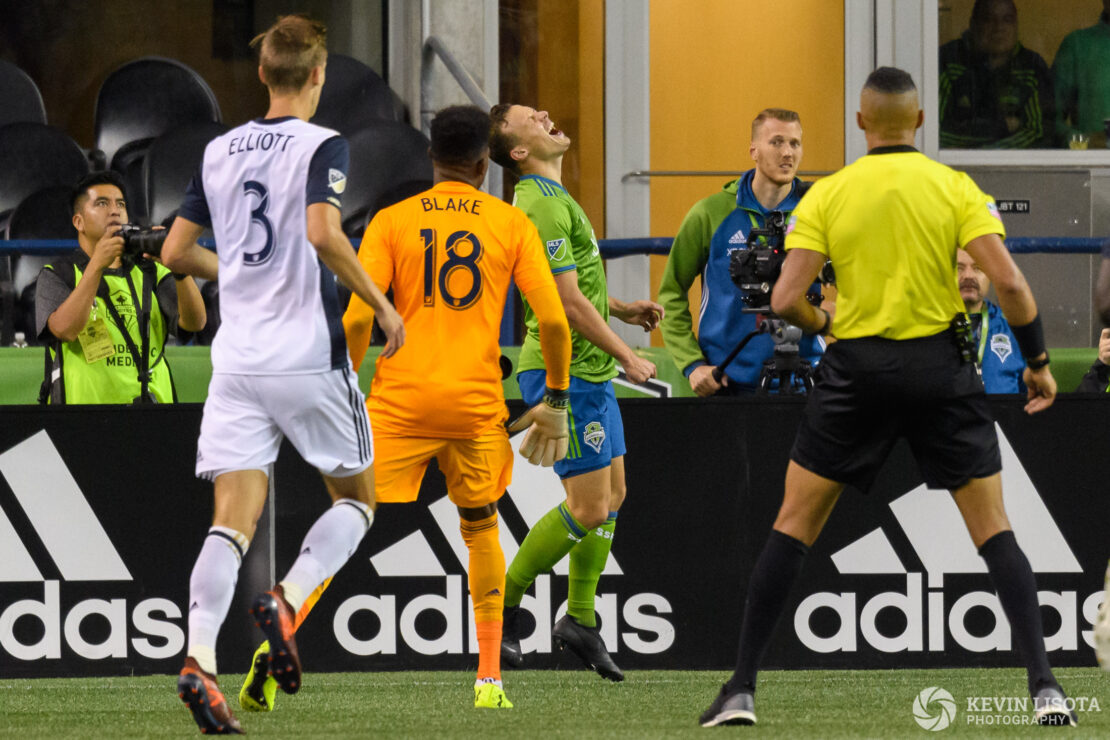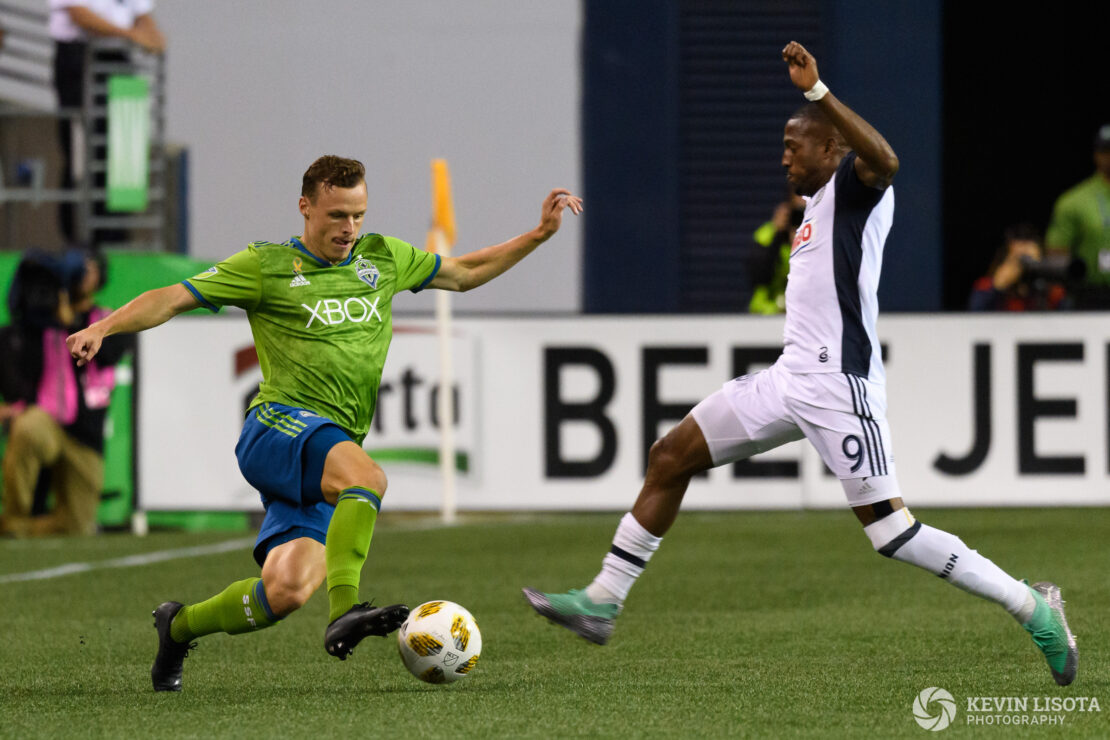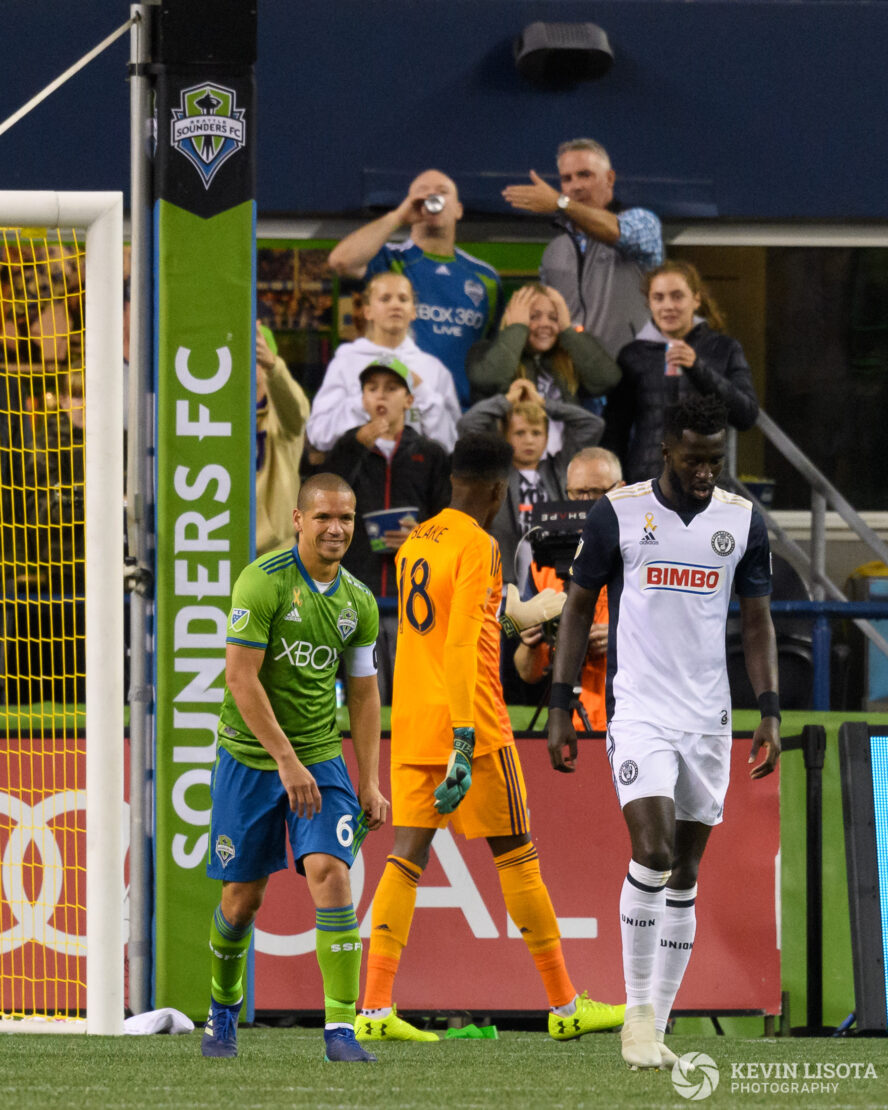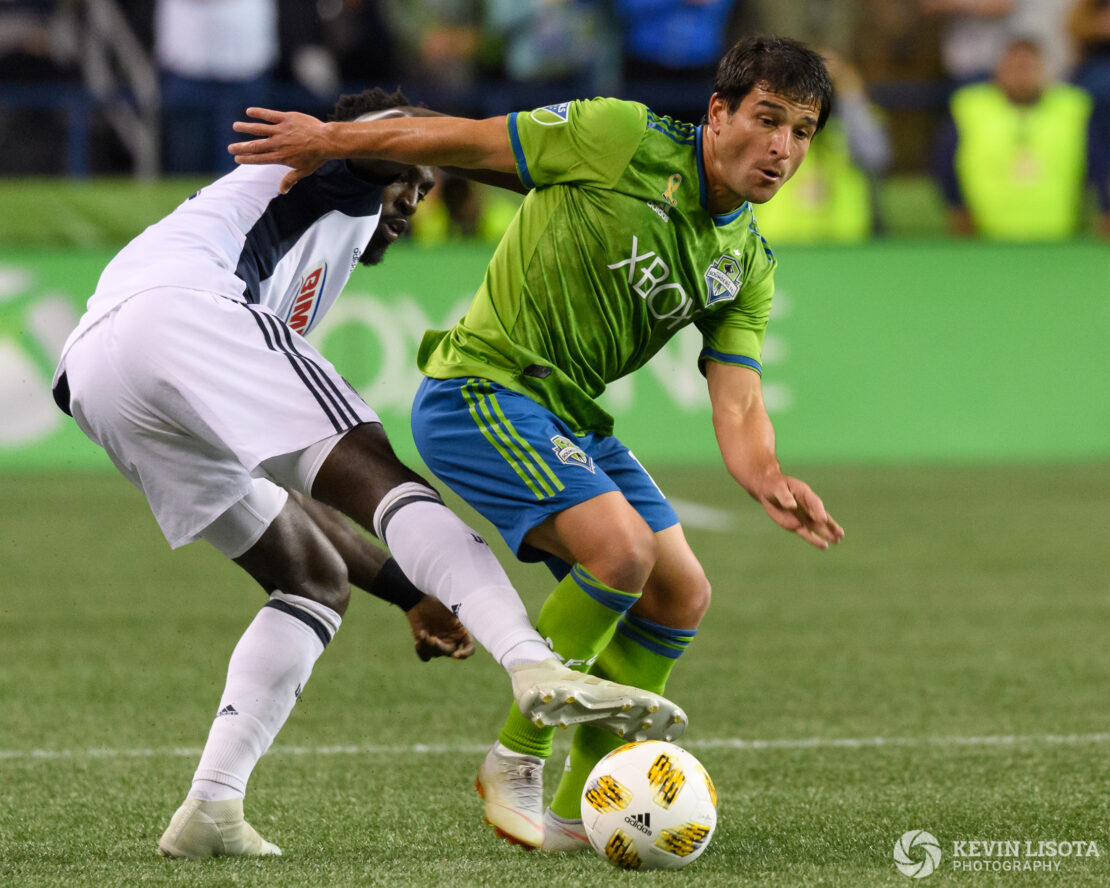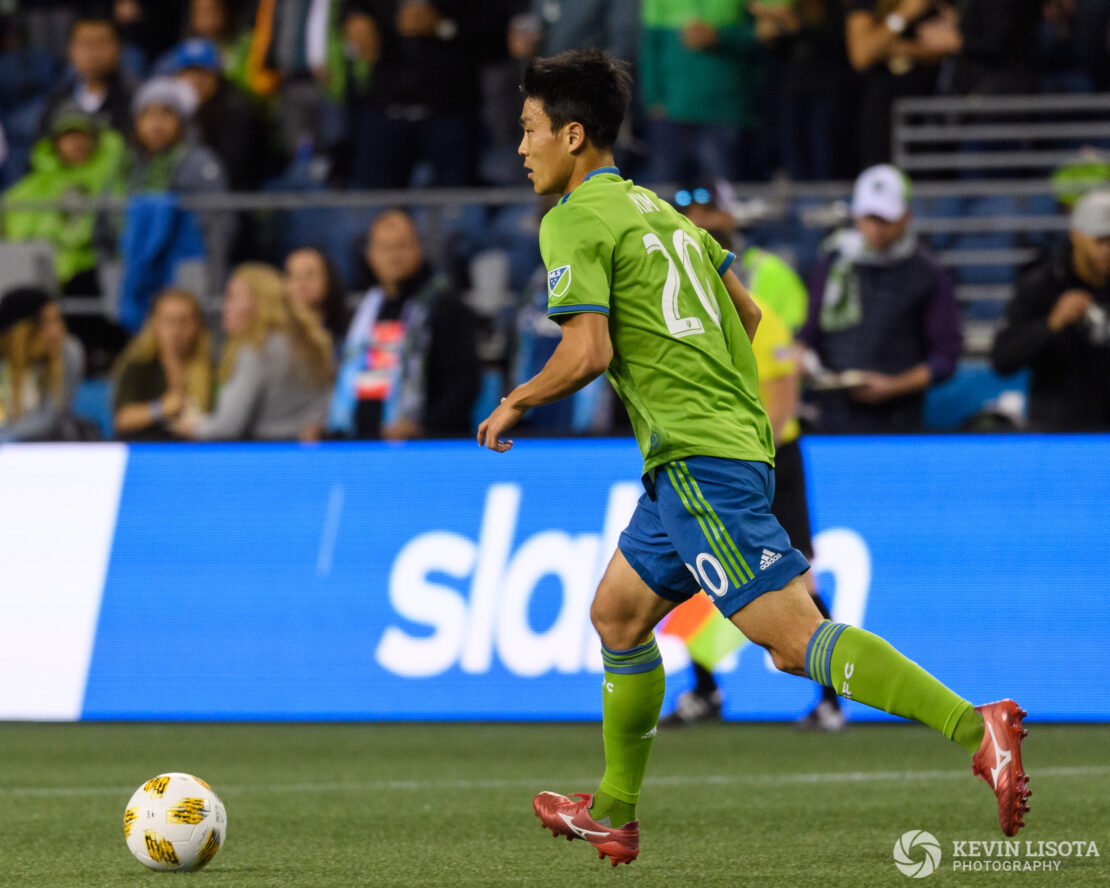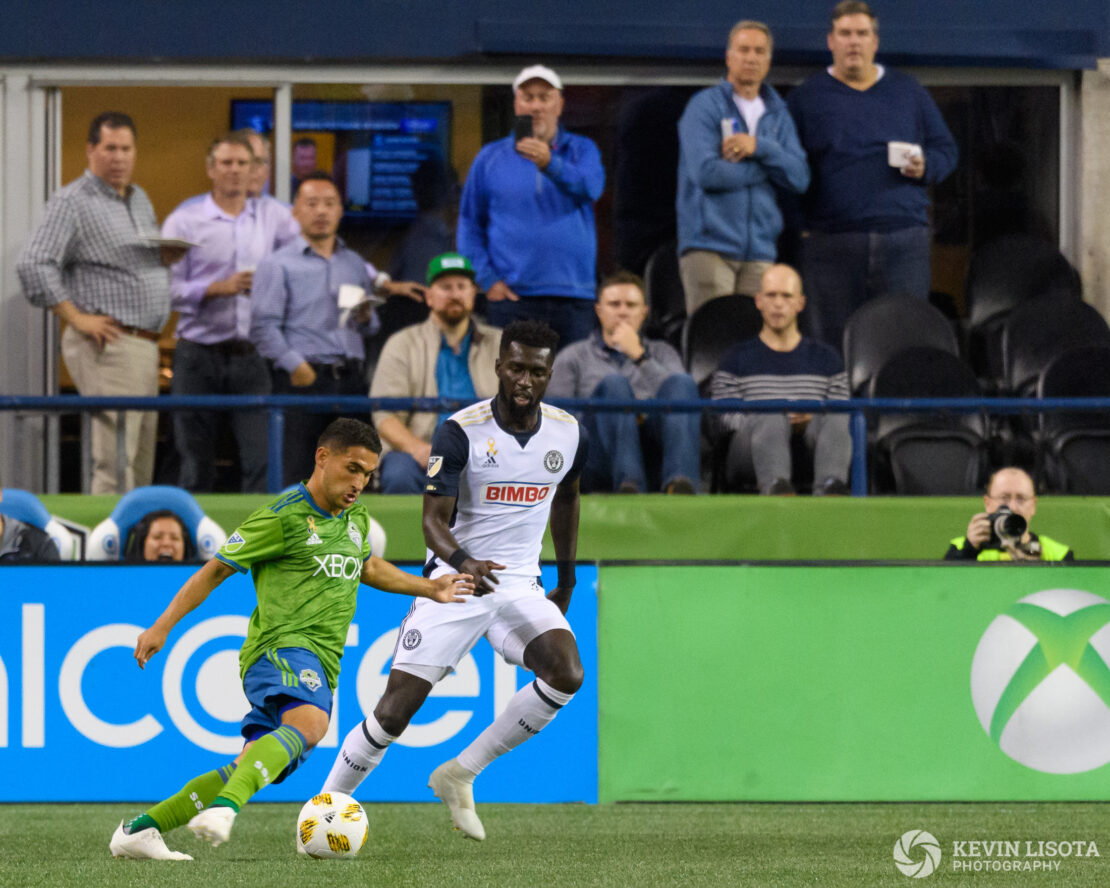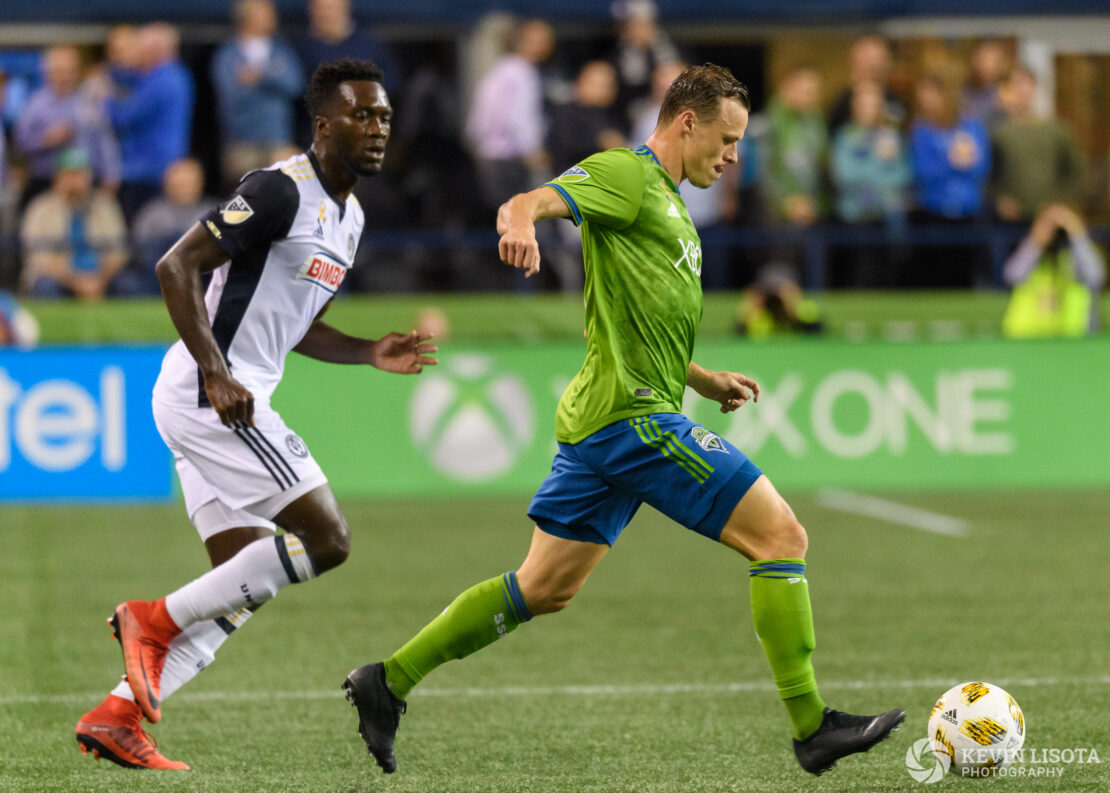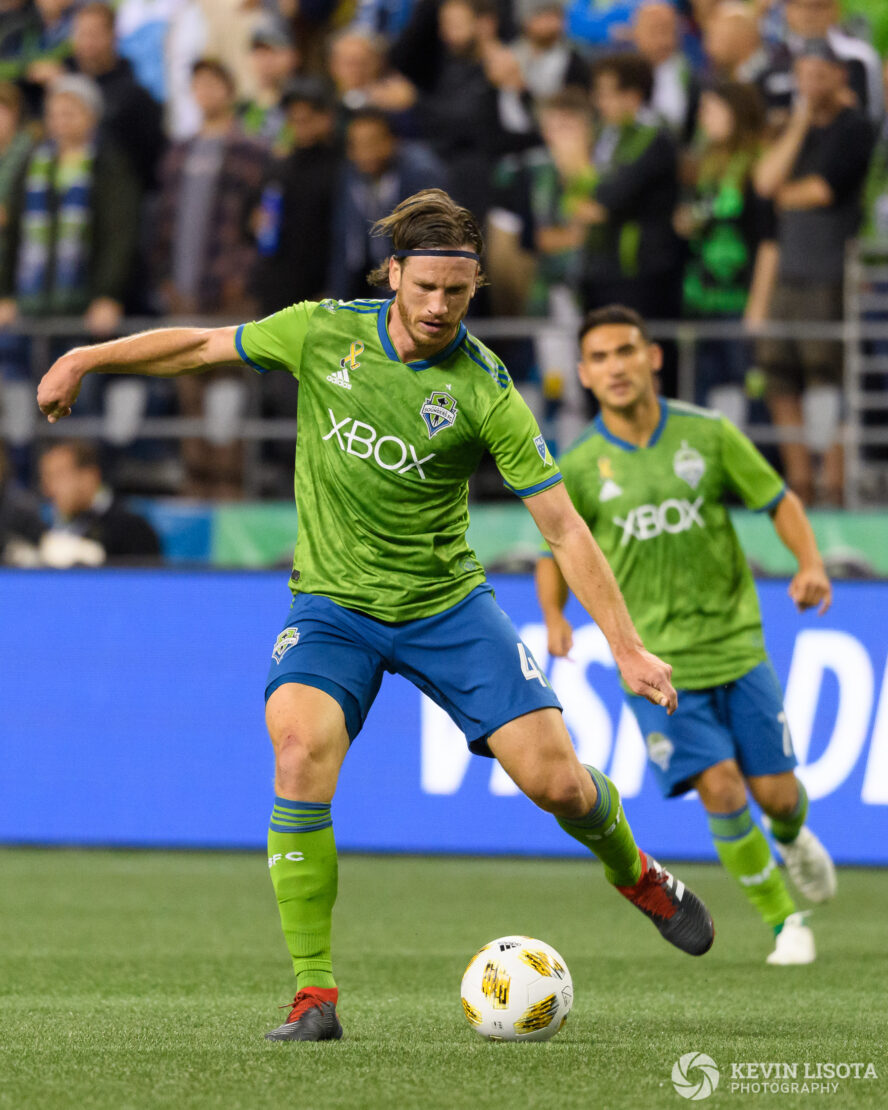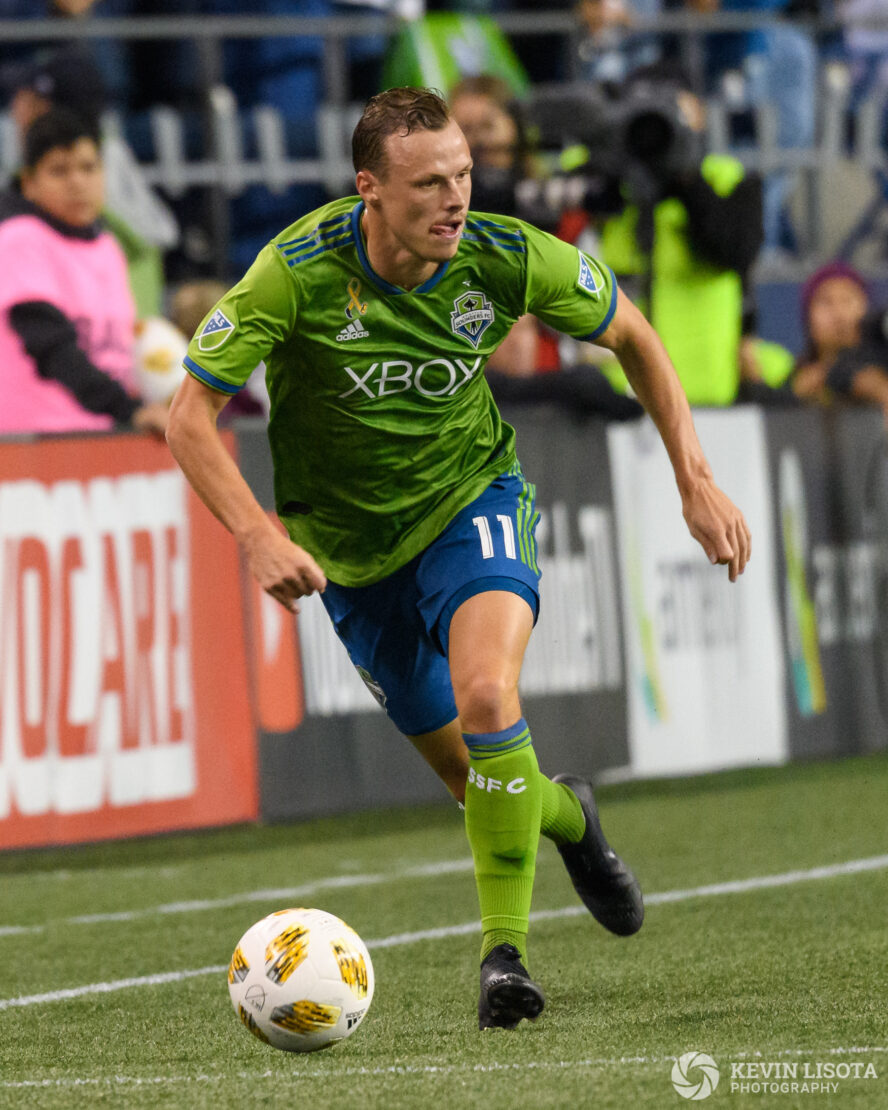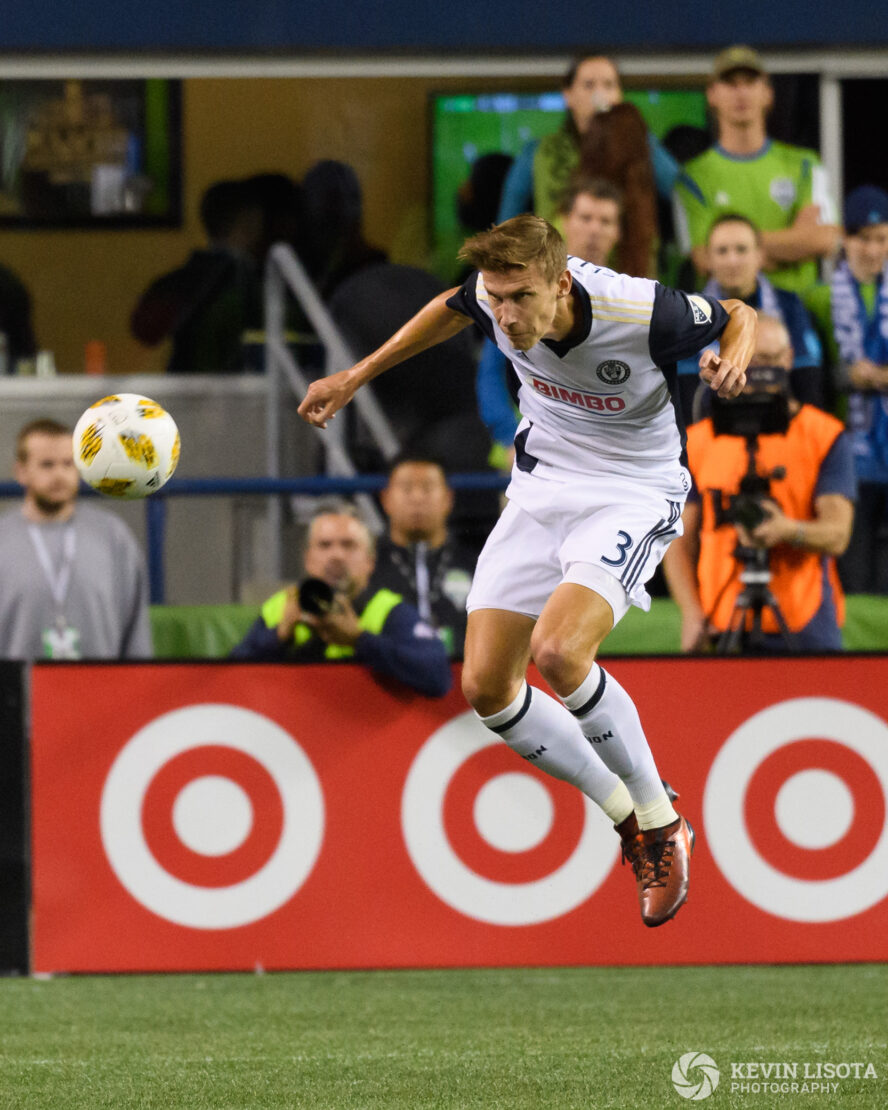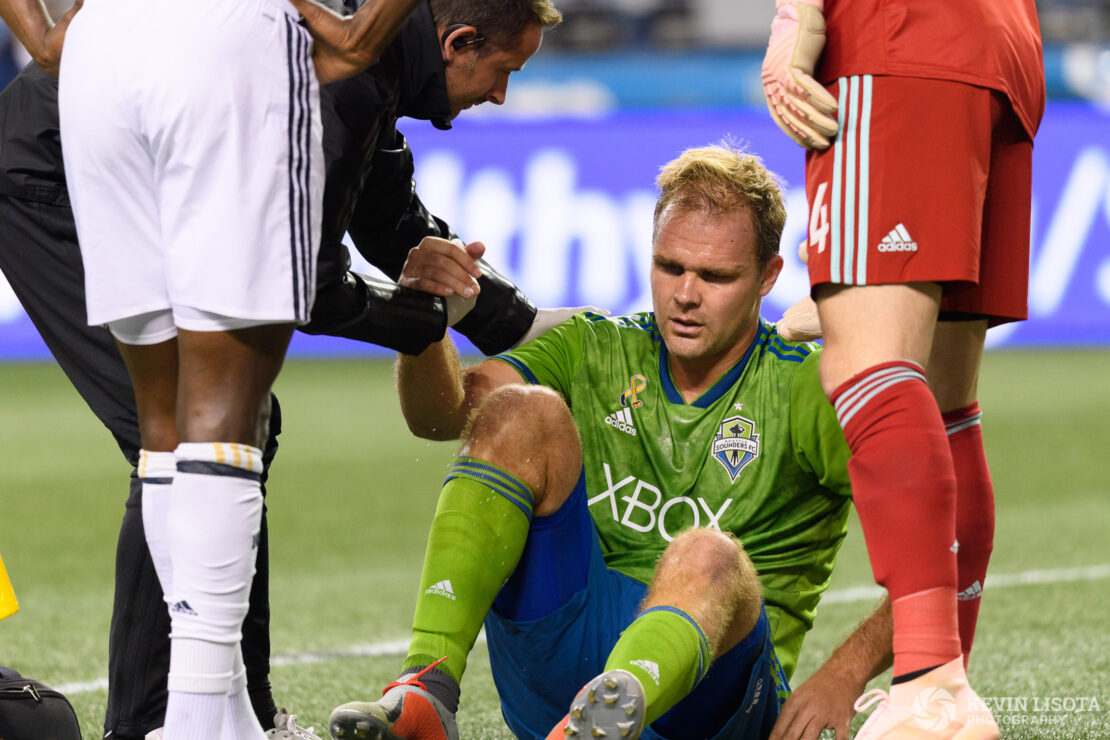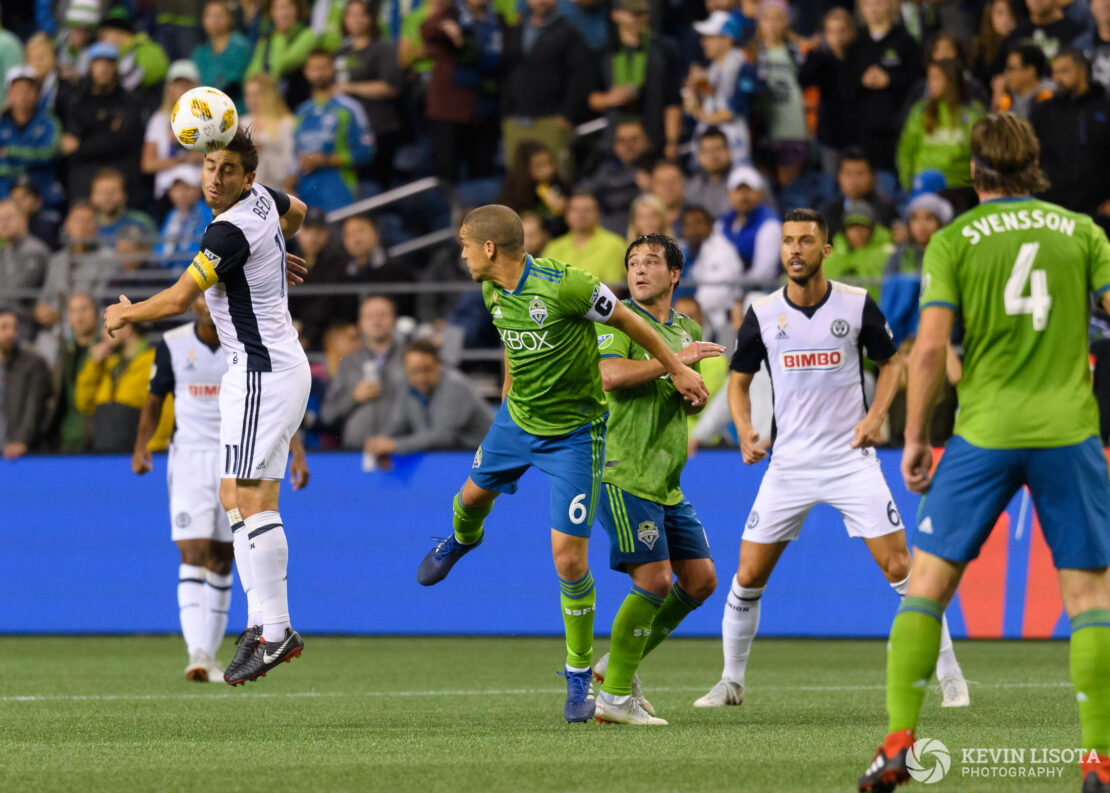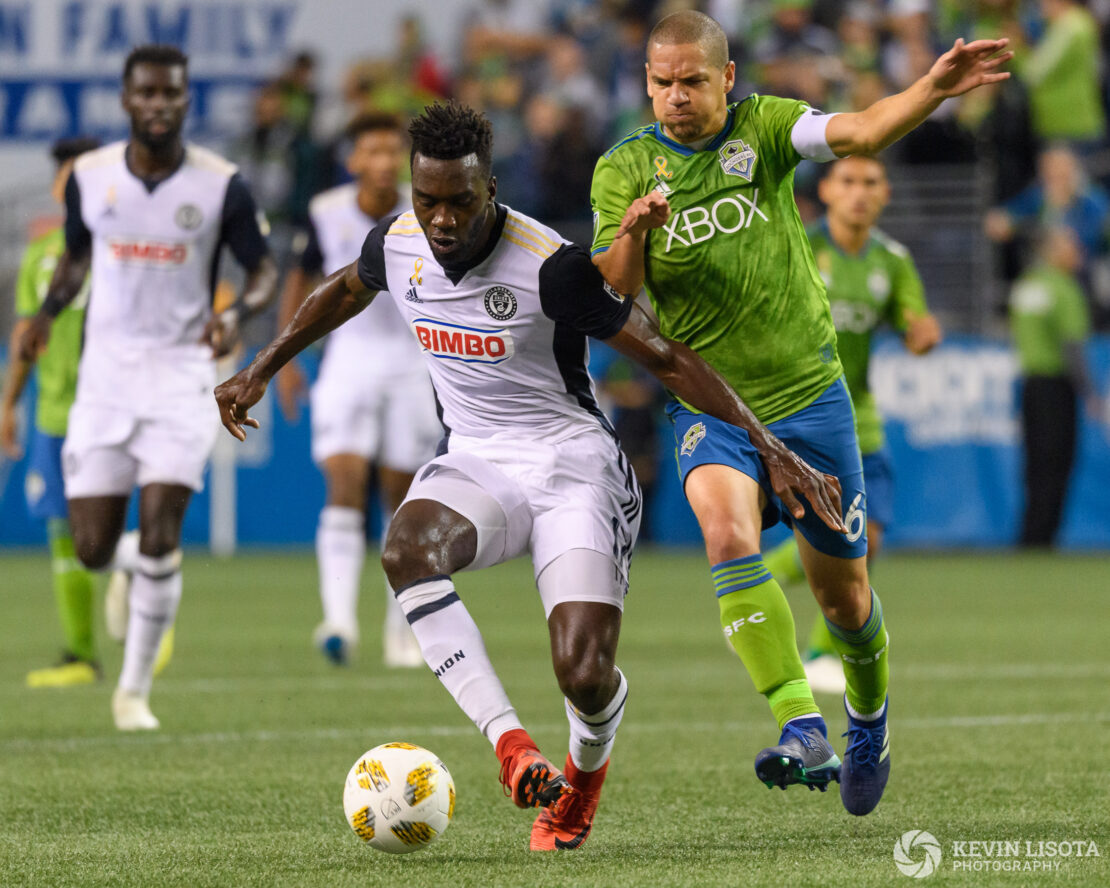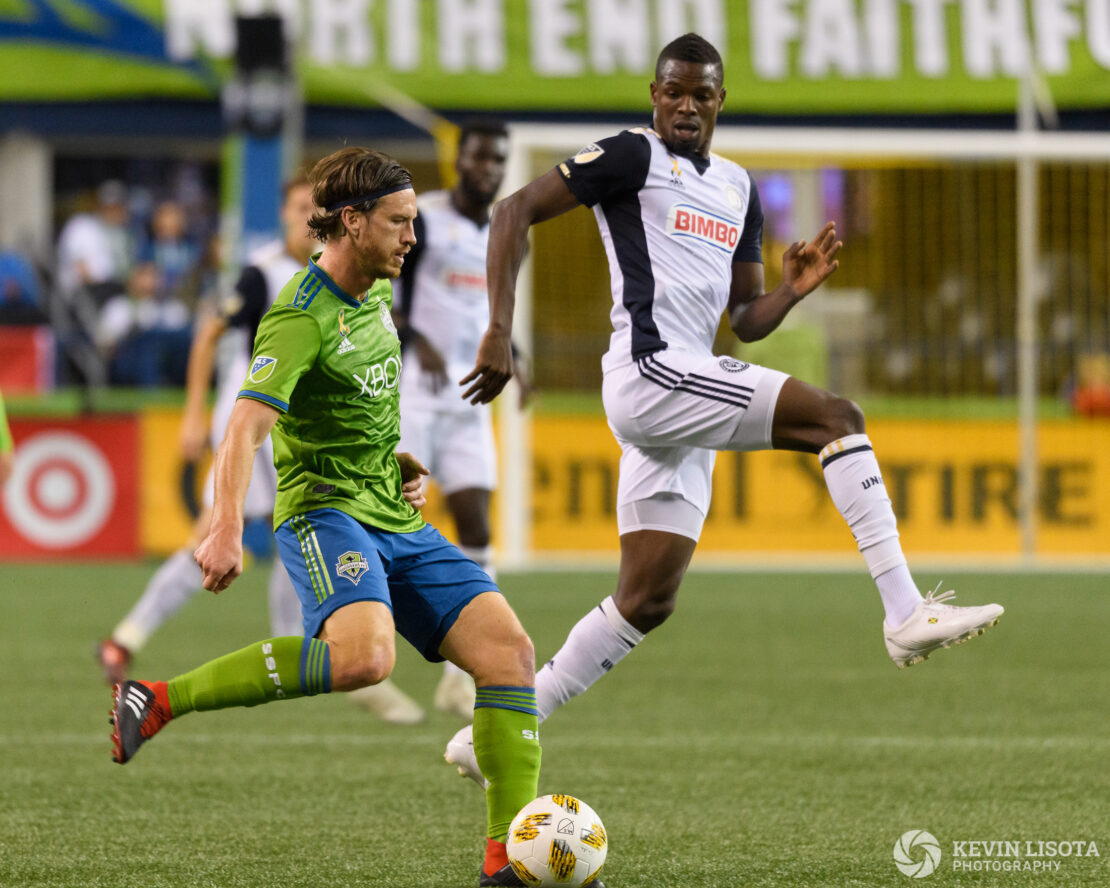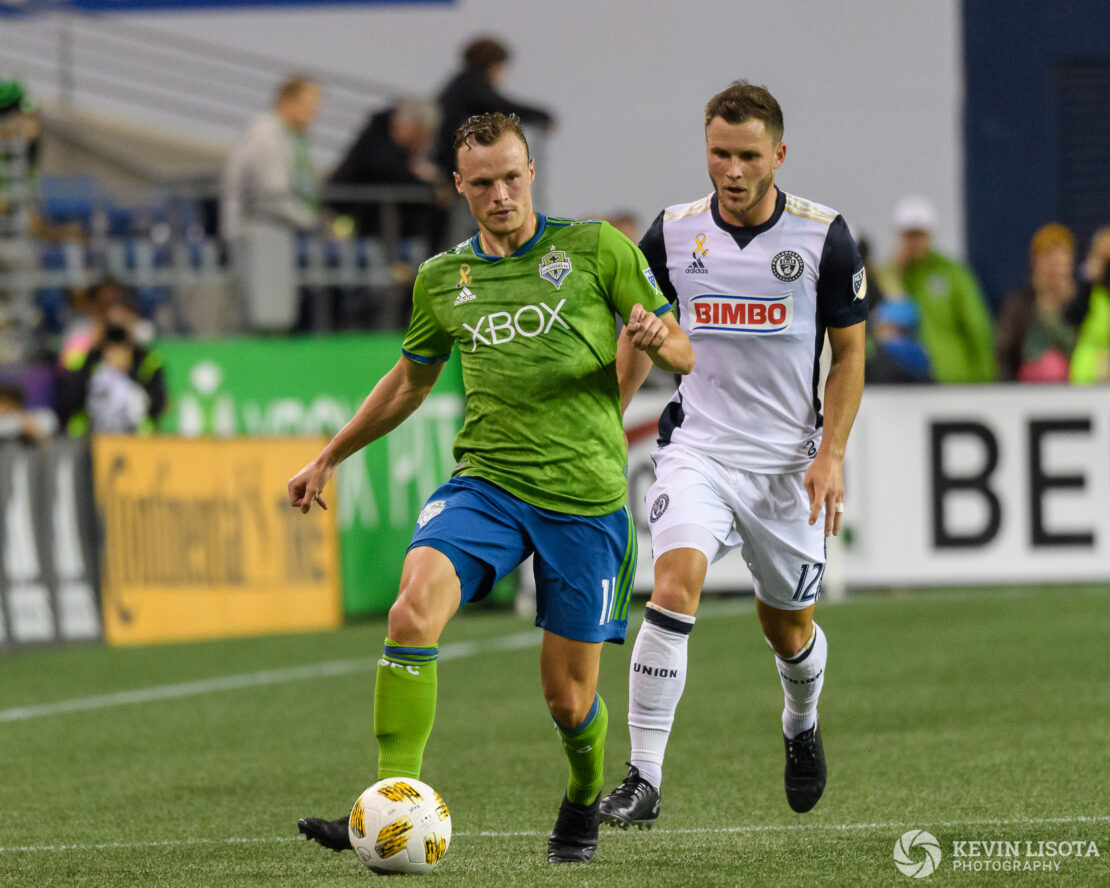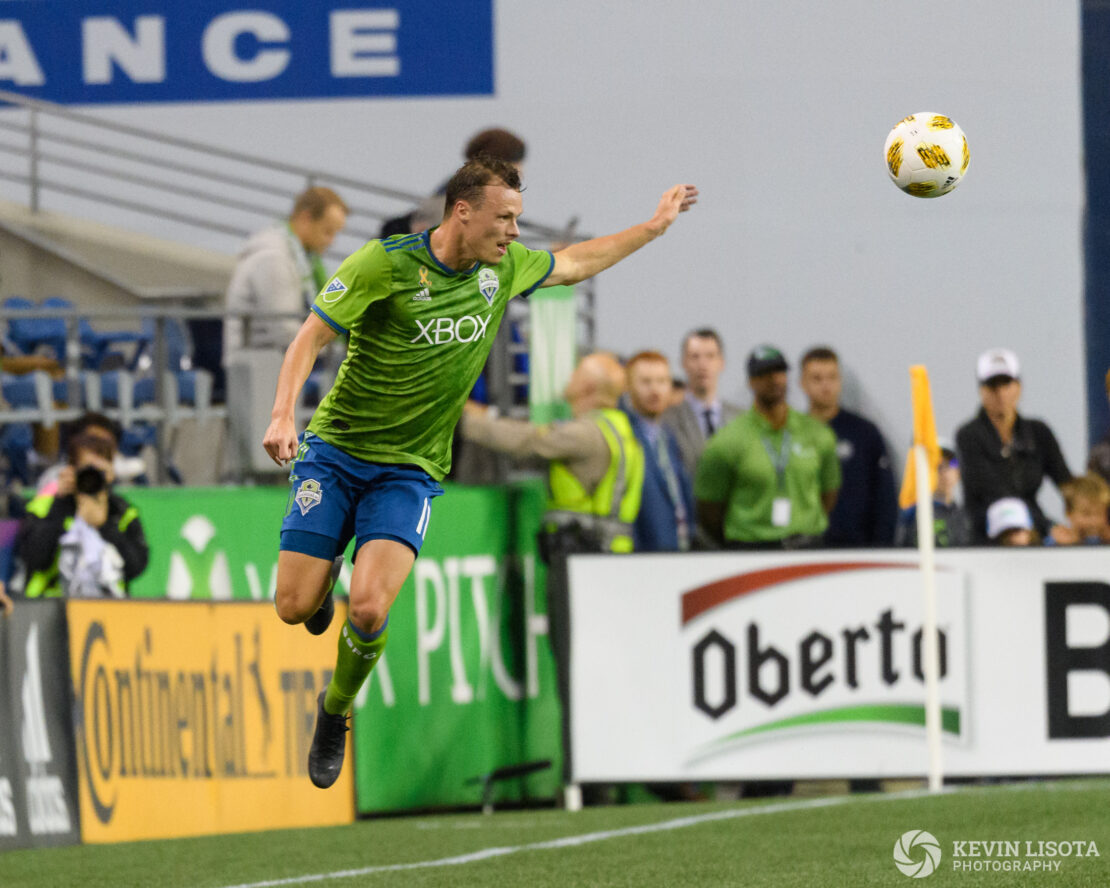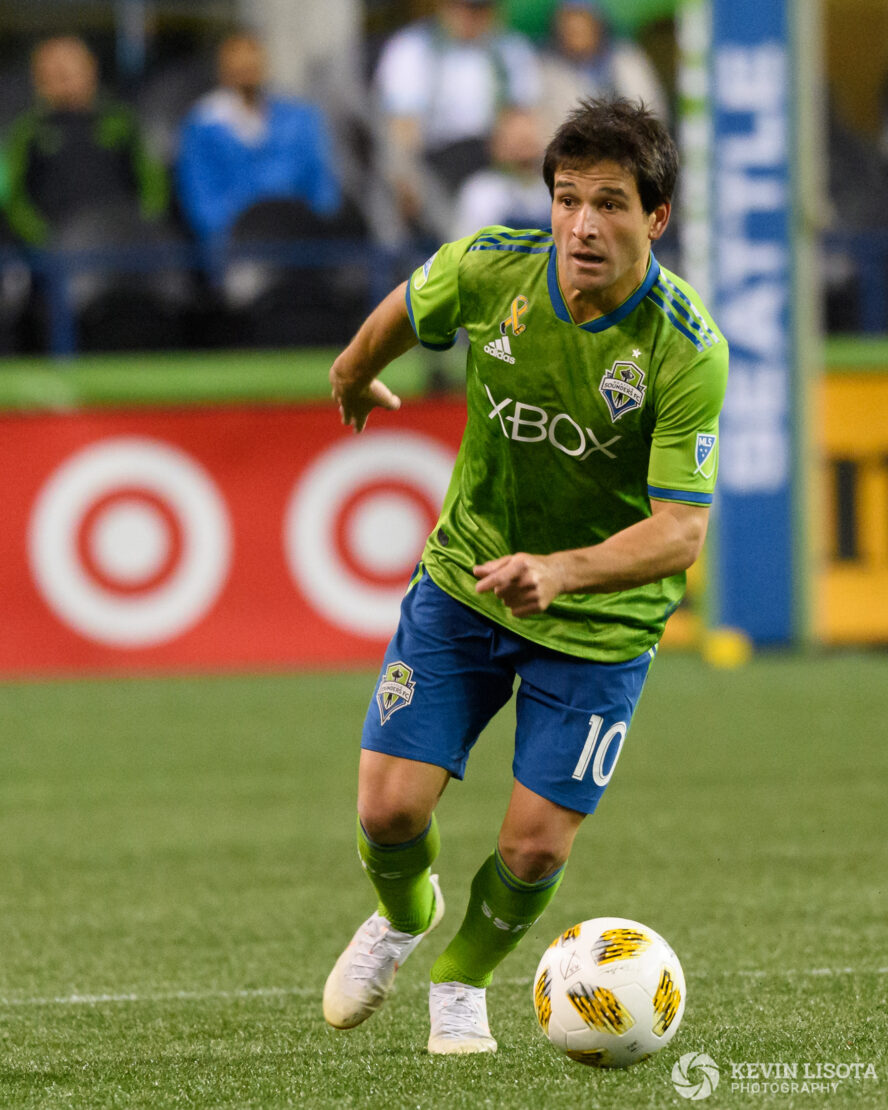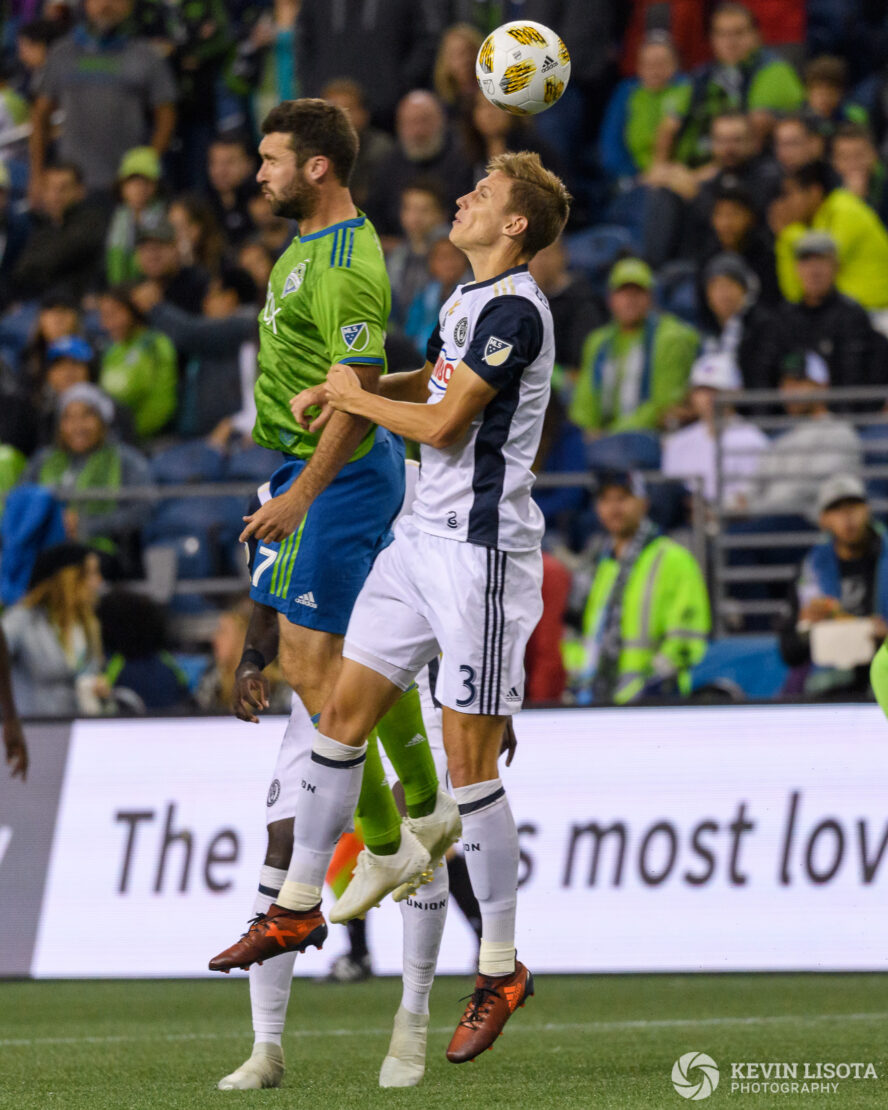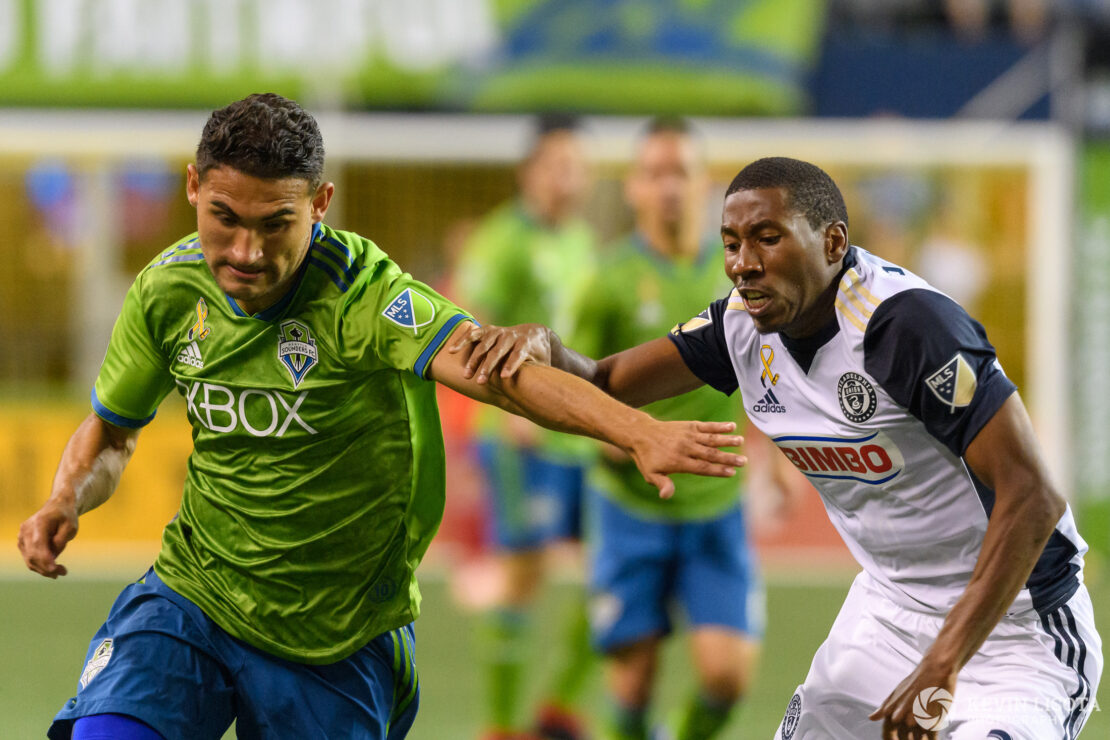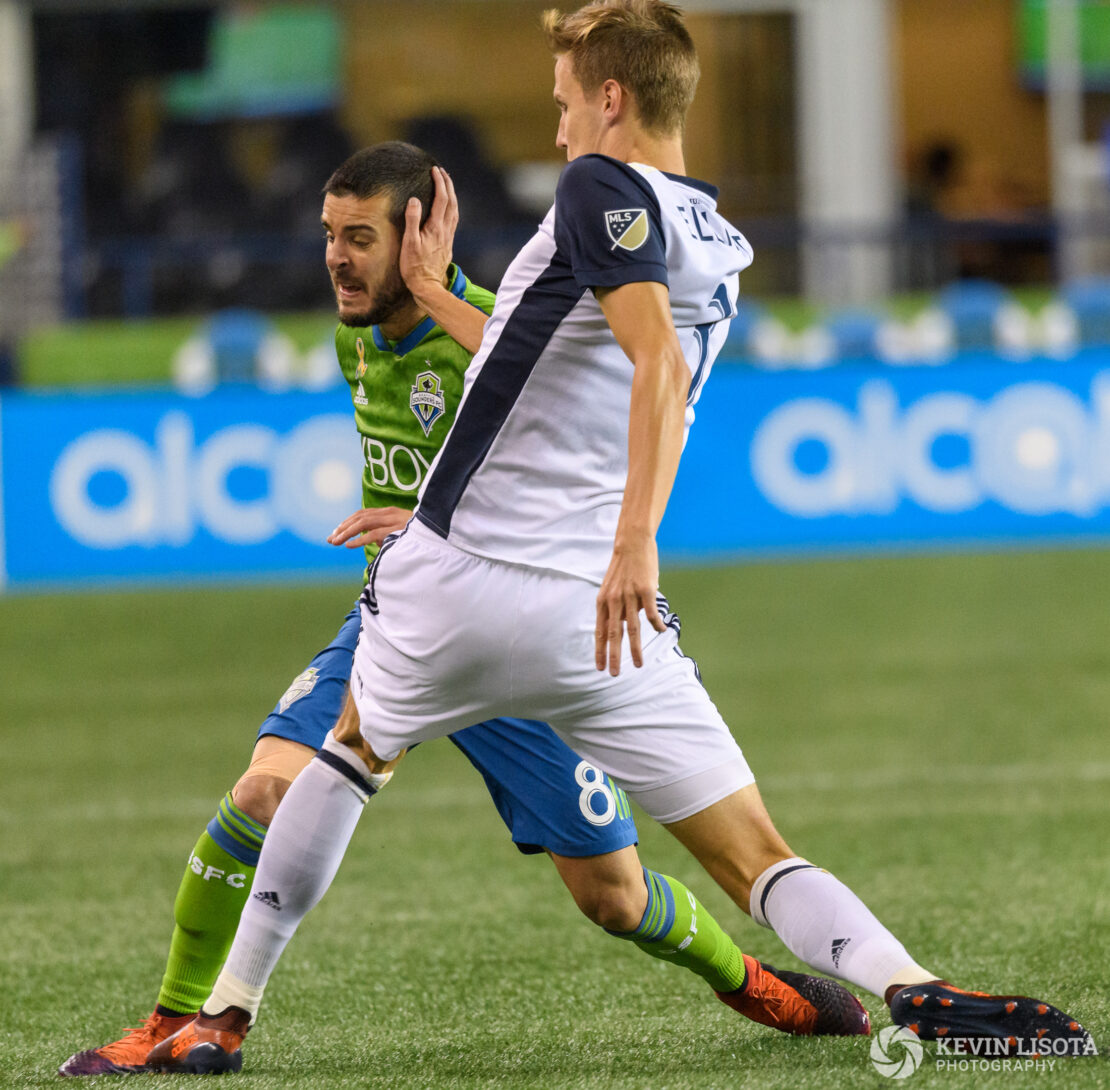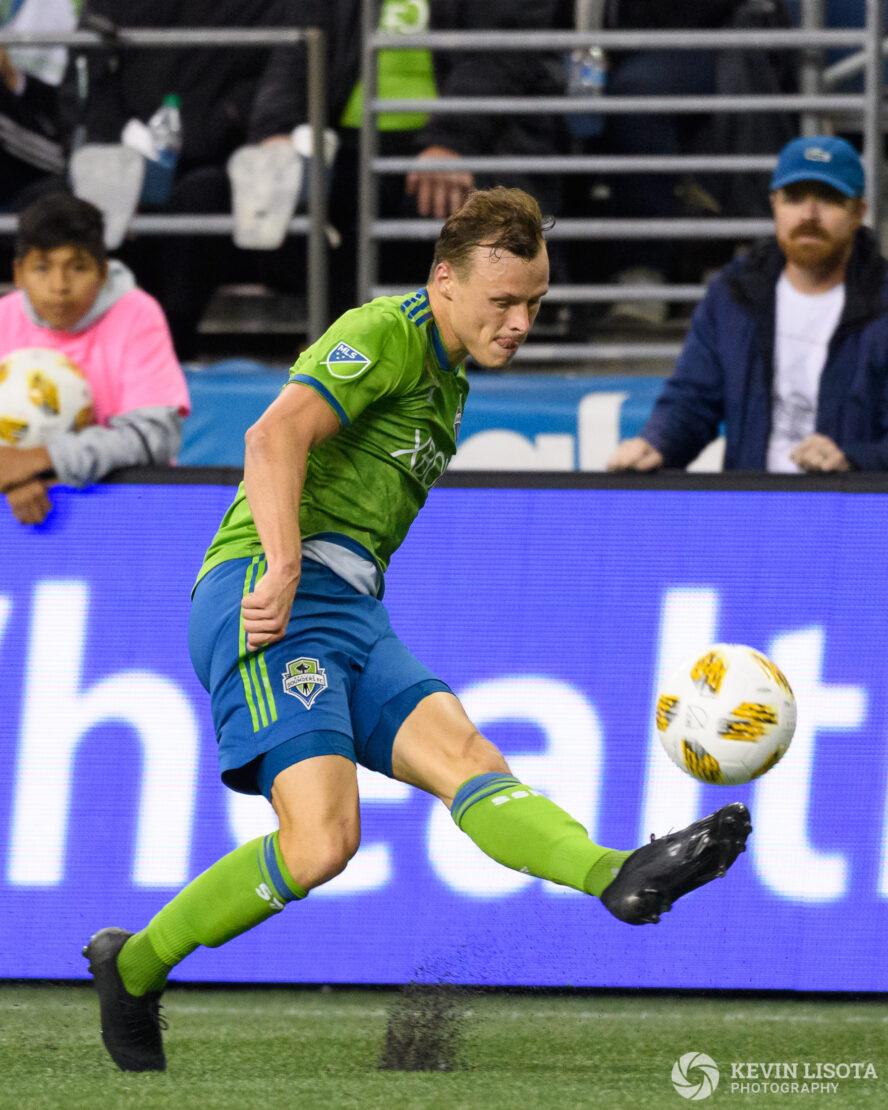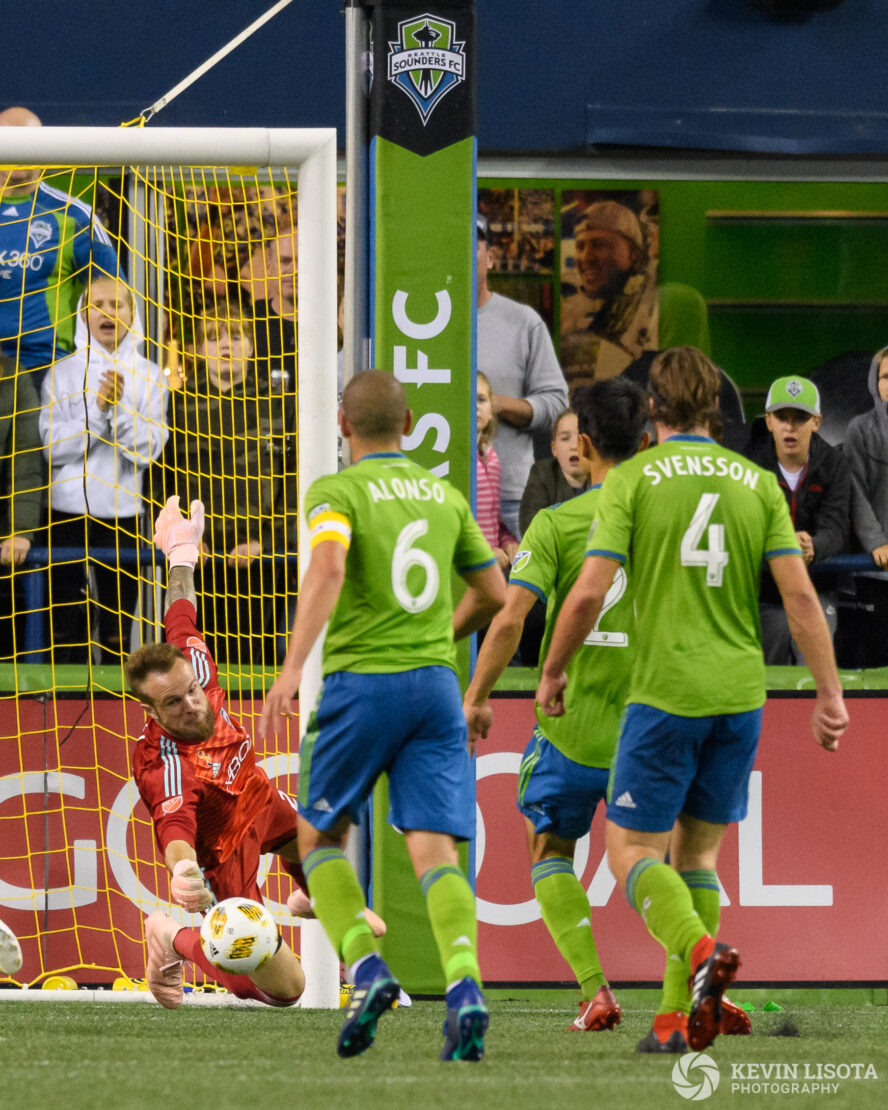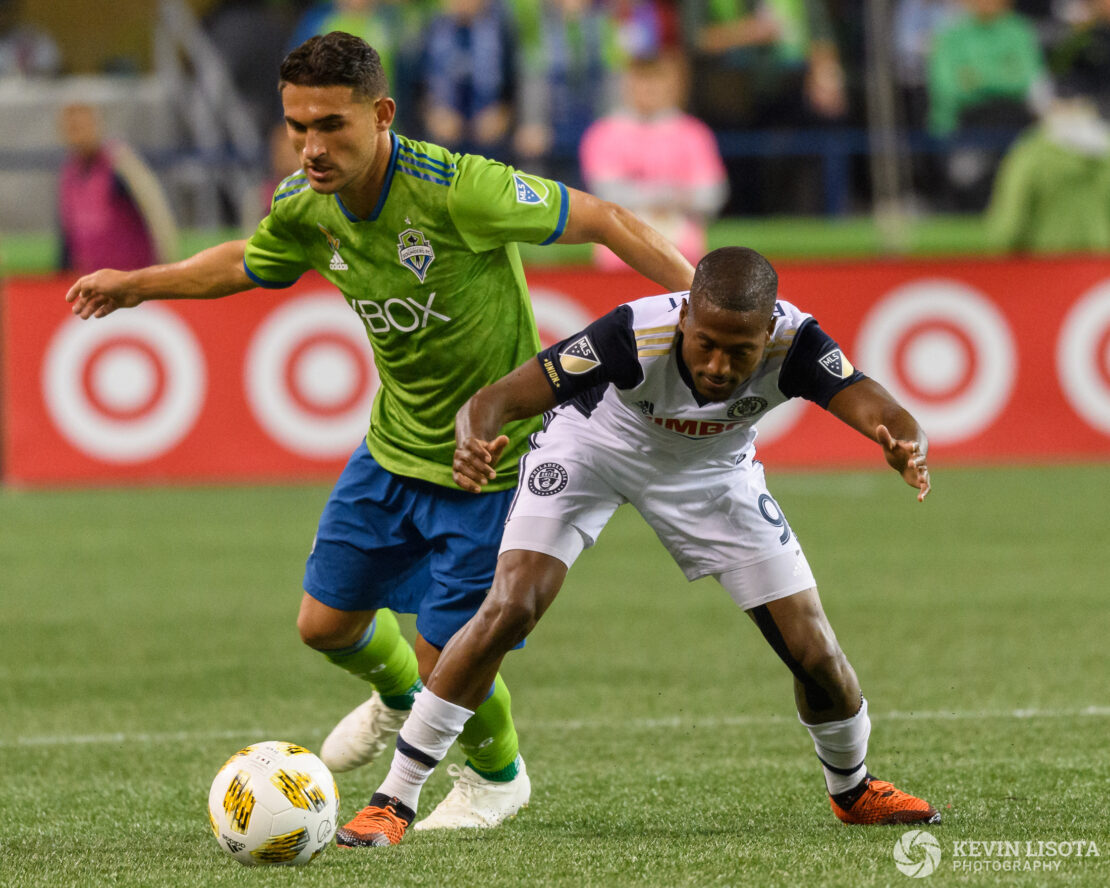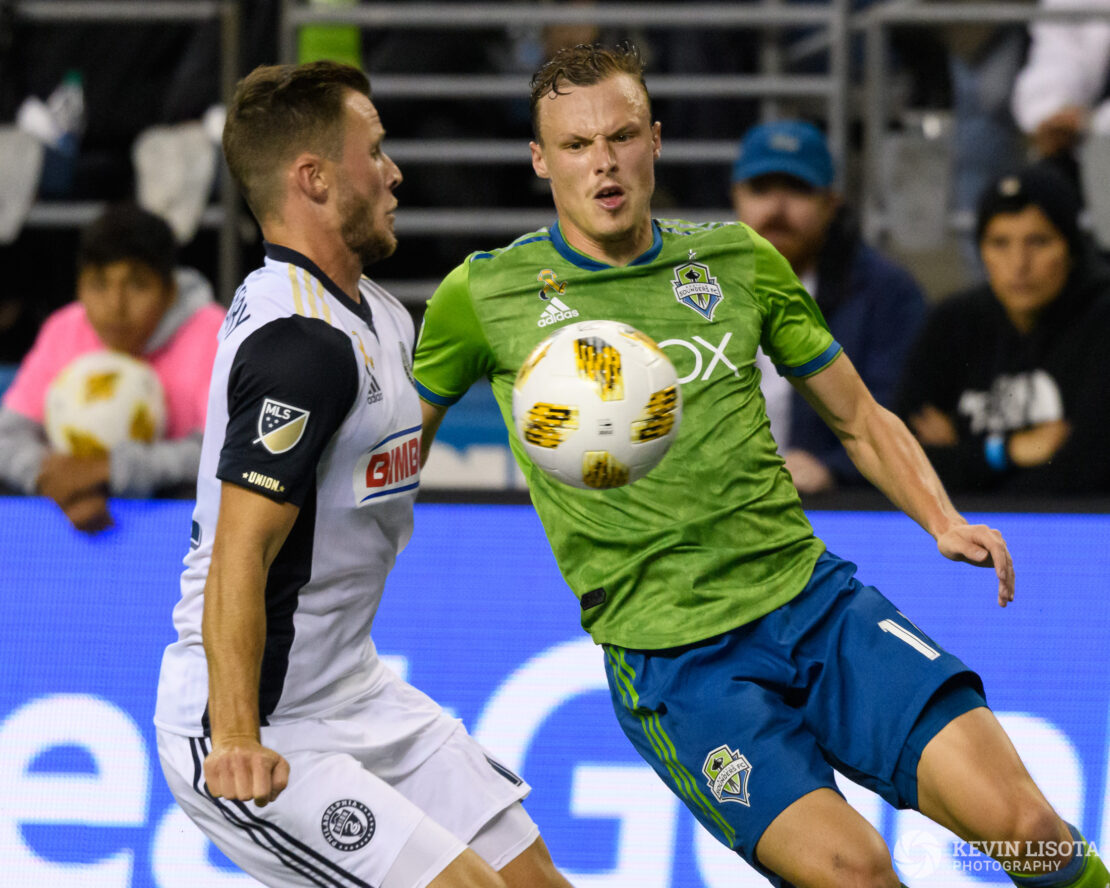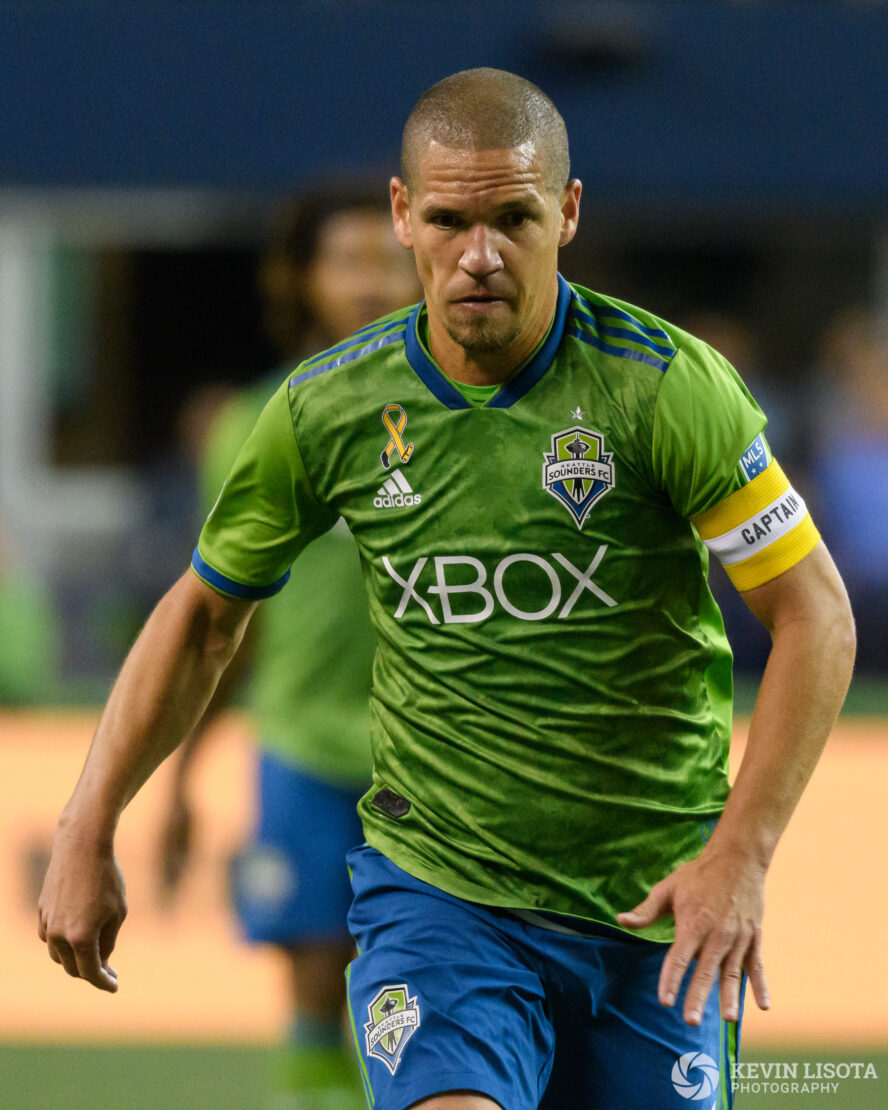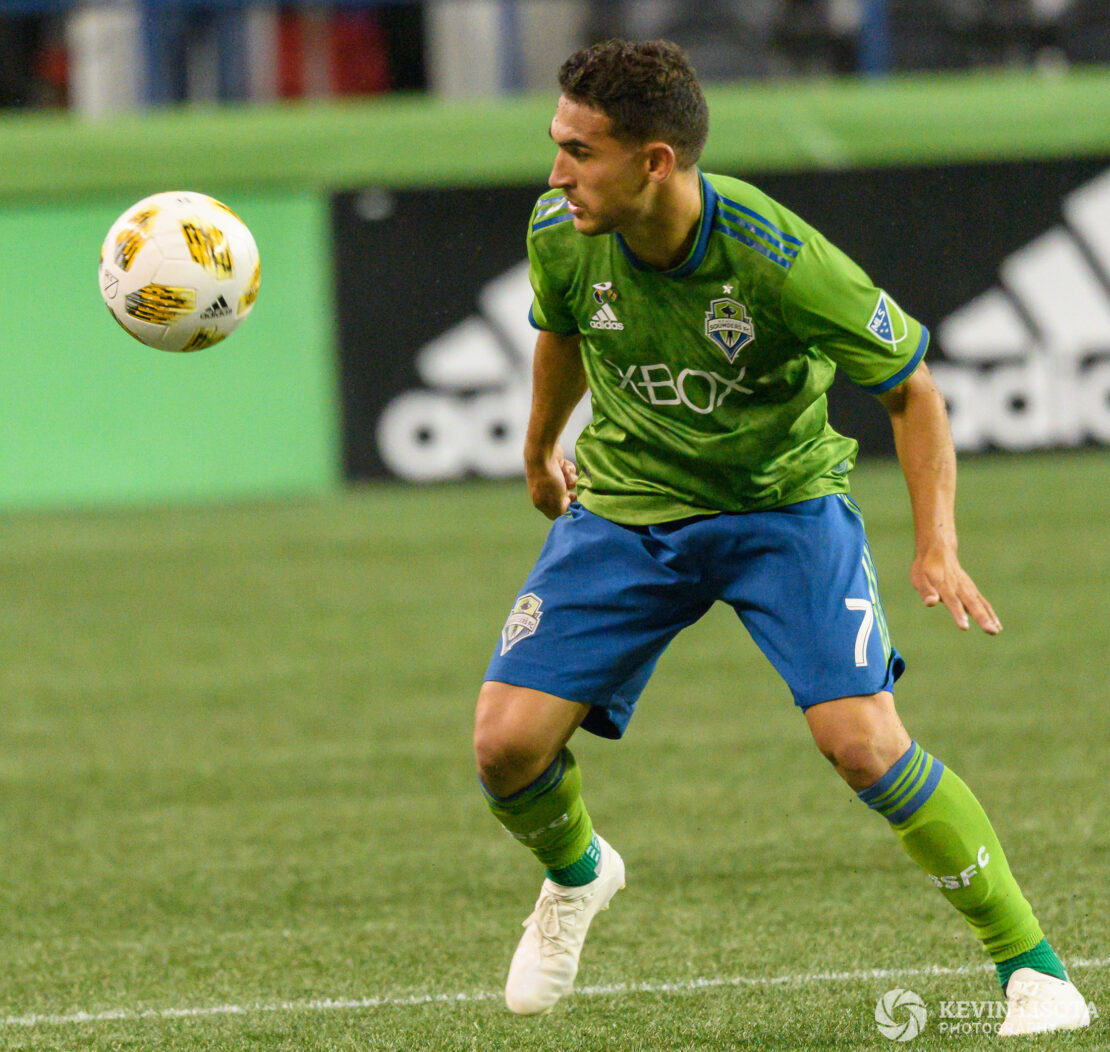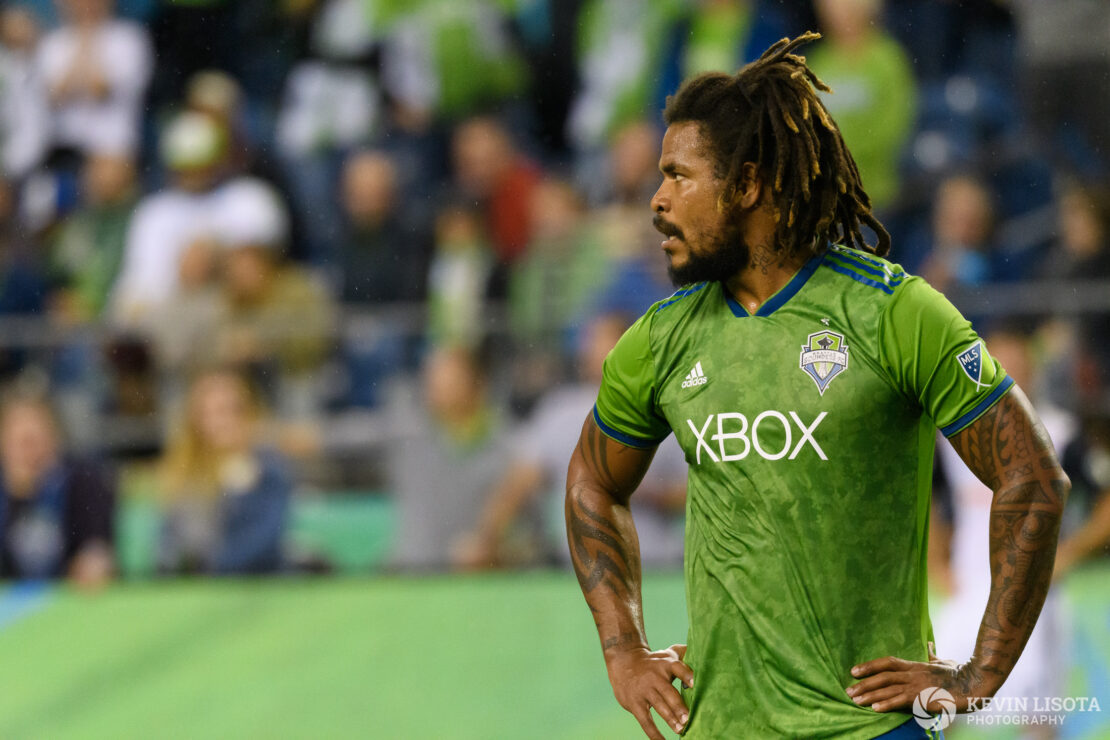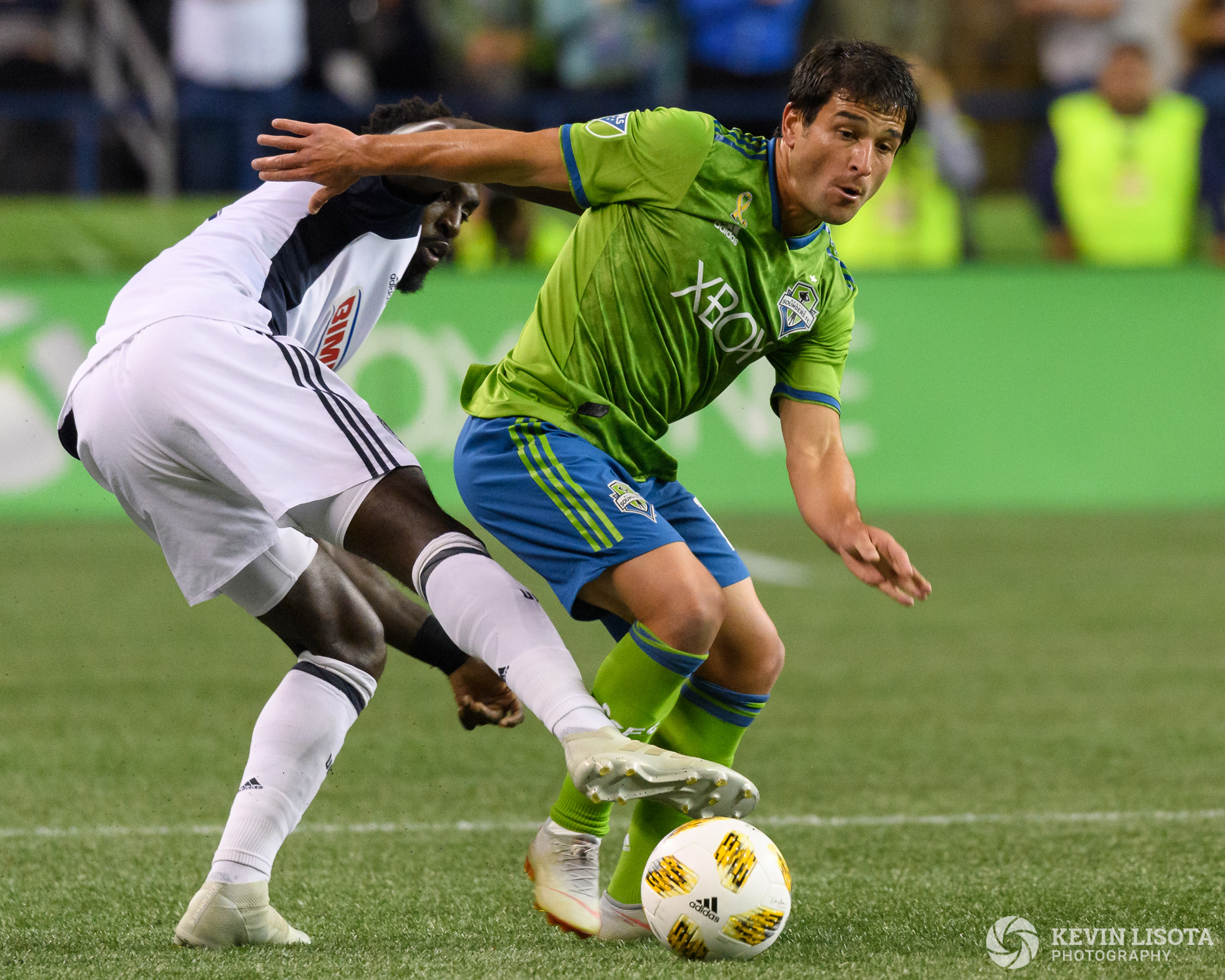
My new Nikon 500mm f/5.6E PF telephoto lens arrived earlier this week. On Tuesday, I took it to the zoo to photograph animals. Yesterday I shot the MLS soccer match at CenturyLink Field between the Seattle Sounders FC and Philadelphia Union to see how it would perform as a sports lens.
Focus & VR
The 500mm f/5.6E PF performed admirably. Focus acquisition was fast, though did not seem quite as fast as my 200-400mm f/4G VR II lens that I normally use to shoot soccer matches and football games. However, it was sufficiently quick for photographing sports. Focus tracking was also good, though that has more to do with the focus system of the camera body than the lens itself.
I shot in 25-point AF-C continuous focus mode, and my keeper ratio was typical compared to my other lenses. Missed focus had little to do with the lens, rather it is usually caused by players suddenly obscuring the subject during fast motion, or mistakenly focusing on someone on the sideline instead of the correct player.
Handling
A typical professional sports photographer will use a combination of two cameras. Usually a large super telephoto lens supported by a monopod for shots at long distances, along with a hand-held second camera with a 70-200mm lens for action that is closer. On the sidelines of an MLS soccer match, you’ll typically find the very large 500mm f/4, 600mm f/4 and sometimes 400mm f/2.8, when the photographer really wants depth-of-field separation and bokeh. Some photographers (like myself) opt for a 200-400mm f/4 zoom to give greater flexibility for changing focal length as the action moves closer and farther away.
The huge super telephoto lenses require a monopod, both to avoid fatigue and to ensure the most stable technique. The 500mm f/5.6E PF is a different story, given how light it is. It can be comfortably hand-held like a 70-200mm lens, and I found myself often taking it off the monopod because it is easier to follow fast action that way. I could not detect any image quality differences between using a monopod and when it was hand-held.
Aperture
The light weight and small size of the 500mm f/5.6E PF comes at a price. It has an aperture of f/5.6, compared to f/4 on most of the heavy super telephoto lenses. The smaller aperture means higher ISO settings to achieve the required shutter speed, resulting in more noise.
To capture fast action, many sports require fast shutter speeds. I find that freezing the action of soccer players requires shutters speeds of 1/640 sec – 1/1000 sec. Freezing a hard-kicked ball requires 1/1600 – 1/2000 sec or faster. Typically I shoot daytime games at 1/1600 sec, but bring that down to 1/1000 sec or so for night games where there is less light, sacrificing some blur on a fast-moving ball.
Daytime sports shooting with a f/5.6 aperture can be easily achieved at high shutter speeds and reasonable ISO settings. Night games will vary. A professional sports stadium is better lit than many venues, but it still pushes the limit of acceptable ISO settings and resulting noise for some camera bodies.
While extremely easy to handle, the sports shooter using a 500mm f/5.6E PF lens will have to know how their camera body behaves at higher ISO settings if they intend to shoot in poorly-lit venues. With a little bit of noise reduction on my Nikon D5, I can comfortably shoot sports at ISO 6400 to get the shutter speeds that I want. My Nikon D500 also gives acceptable results at higher ISO settings, but requires slightly more noise reduction compared to the D5. Other camera bodies behave differently and can be noisier at these higher ISO settings, so you’ll have to judge this for yourself if you intend to use this lens to shoot sports in poorly-lit venues.
Sharpness
I found the sharpness of images from the 500mm f/5.6E PF to be quite good at all distances, even at the far end of the field 100+ yards away. Higher ISO settings did give some grain to the photos, so a true evaluation of the lens sharpness will have to wait until I have the chance to shoot a game in full daylight.
Click on the gallery below for full-size images. You can also visit my gallery of full-resolution images from the soccer match if you want to see or download more detailed results for yourself. Please note, most of the photos are cropped for composition, and some of the distant shots at 100+ yards are cropped significantly.
